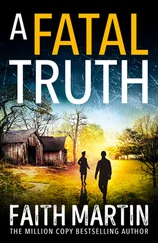FAITH MARTINhas been writing for nearly thirty years, under four different pen names, and has published over fifty novels. She began writing romantic thrillers as Maxine Barry, but quickly turned to crime! As Joyce Cato she wrote classic-style whodunits, since she’s always admired the golden-age crime novelists. But it was when she created her fictional DI Hillary Greene, and began writing under the name of Faith Martin, that she finally began to become more widely known. Her latest literary characters, WPC Trudy Loveday and city coroner Dr Clement Ryder, take readers back to the 1960s, and the city of Oxford. Having lived within a few miles of the city’s dreaming spires for all her life (she worked for six years as a secretary at Somerville College), both the city and the countryside/wildlife often feature in her novels. Although she has never lived on a narrowboat (unlike DI Hillary Greene!) the Oxford canal, the river Cherwell, and the flora and fauna of a farming landscape have always played a big part in her life – and often sneak their way onto the pages of her books.
Readers love the Ryder & Loveday series
‘Insanely brilliant’
‘I absolutely loved this book’
‘Faith Martin, you’ve triumphed again. Brilliant!’
‘If you haven’t yet read Miss Martin you have a treat in store’
‘I can safely say that I adore the series featuring Dr. Clement Ryder and Probationary WPC Trudy Loveday’
‘This book is such a delight to read. The two main characters are a joy’
‘Yet another wonderful book by Faith Martin!’
‘As always a wonderful story, great characters, great plot. This keeps you gripped from the first page to the last. Faith Martin is such a fantastic author’
A Fatal Truth
A Fatal Secret
A Fatal Flaw
A Fatal Mistake
A Fatal Obsession
A Fatal Affair
FAITH MARTIN

HQ
An imprint of HarperCollins Publishers Ltd.
1 London Bridge Street
London SE1 9GF
www.harpercollins.co.uk
HarperCollins Publishers
1st Floor, Watermarque Building, Ringsend Road
Dublin 4, Ireland
First published in Great Britain by HQ in 2021
Copyright © Faith Martin
Faith Martin asserts the moral right to be identified as the author of this work.
A catalogue record for this book is available from the British Library.
This novel is entirely a work of fiction. The names, characters and incidents portrayed in it are the work of the author’s imagination. Any resemblance to actual persons, living or dead, events or localities is entirely coincidental.
All rights reserved under International and Pan-American Copyright Conventions. By payment of the required fees, you have been granted the non-exclusive, non-transferable right to access and read the text of this e-book on-screen. No part of this text may be reproduced, transmitted, downloaded, decompiled, reverse engineered, or stored in or introduced into any information storage and retrieval system, in any form or by any means, whether electronic or mechanical, now known or hereinafter invented, without the express written permission of HarperCollins.
Source ISBN: 9780008410490
E-book Edition © March 2021 ISBN: 9780008410483
Version: 2021-01-05
Table of Contents
Cover
About the Author
Readers love the Ryder & Loveday series
Also by Faith Martin
Title Page
Copyright
Prologue: Tuesday 1st May, 1962
Chapter 1
Chapter 2
Chapter 3
Chapter 4
Chapter 5
Chapter 6
Chapter 7
Chapter 8
Chapter 9
Chapter 10
Chapter 11
Chapter 12
Chapter 13
Chapter 14
Chapter 15
Chapter 16
Chapter 17
Chapter 18
Chapter 19
Chapter 20
Chapter 21
Chapter 22
Chapter 23
Chapter 24
Chapter 25
Chapter 26
Chapter 27
Chapter 28
Chapter 29
Chapter 30
Chapter 31
Chapter 32
Chapter 33
Chapter 34
Chapter 35
Chapter 36
Dear Reader …
Keep Reading …
About the Publisher
Prologue
Tuesday 1st May, 1962
No one in the city of dreaming spires on that chilly May Day morning would have been thinking about death. Why would they, when the birds were singing, and everyone was congregating around Magdalen Tower, counting down the moments until it was 6 a.m.; that magical moment when the city began its celebrations in earnest?
Certainly, the excited young choristers clustered at the very top of the college building had no reason to ponder on tragedy. Rather, their minds were firmly fixed on their soon-to-be-given rendition of that lovely piece, ‘ Te Deum Patrem colimus ’ , the singing of which had been customary from Magdalen Tower on May Day since 1509.
Even the influx of foreign visitors to the city on that special morning were far more interested in watching, with bemusement and disbelief, the quaint and colourful antics of the Morris Dancers that thronged the city streets, with their jingling bells and clacking sticks, than in contemplating murder.
After all, who in that beautiful and ancient city could believe on such a wonderfully auspicious and bright spring day that anything dark and fatal could be happening anywhere? Weren’t the daffodils and tulips, the forsythia bushes and polyanthus, blooming in multi-coloured glory in all the gardens, proclaiming that life itself was good? Little children, perhaps bored with Latin hymns, were laughing and playing and singing their own, far more down-to-earth, songs, every bit as traditional to May Day, and carried on the breeze – ‘Now is the Month of Maying’ competing with ‘Oh the Little Busy Bee’ for dominance.
Tourists took photographs. The choristers, flushed with triumph, eventually left the tower. The people in the streets, flushed with having witnessed proper ‘English culture’ sought out any cafés that might be open so early in the morning in search of that other British stalwart, a hot cup of tea.
And less than seven miles away, in a small country village that had for centuries celebrated May Day almost as assiduously as its nearest city, a plump, middle-aged woman made her bustling way through the quiet lanes and barely stirring cottages, towards the village green.
Margaret Bellham had lived in Middle Fenton for all her life, first attending the village school there, and then marrying a lad who’d grown up four doors from her down the lane, and moving into a tied cottage on one of the farm estates.
In her younger days, she had missed out on being chosen May Queen for the day by the narrowest of margins, and had long since mourned the fact. Still, such disappointments hadn’t stopped her from cheerfully ruling the roost on the May Day Committee for the last twenty years.
It was her job to see that the May Day Procession, including all the infants and juniors from the school went like clockwork, with the flower-festooned ‘crown’ and four lances being allocated to only the most responsible (and strongest) children to carry. It was she who organised the village ladies who would be producing the food for the afternoon picnic, traditionally held around the village duck pond. And, naturally, it was her responsibility to ensure that the village maypole, a permanent structure erected in pride of place on the village green nearly two centuries ago, was ready for the maypole dancing by all the village maidens under the age of eighteen, which would start promptly at noon.
Читать дальше













